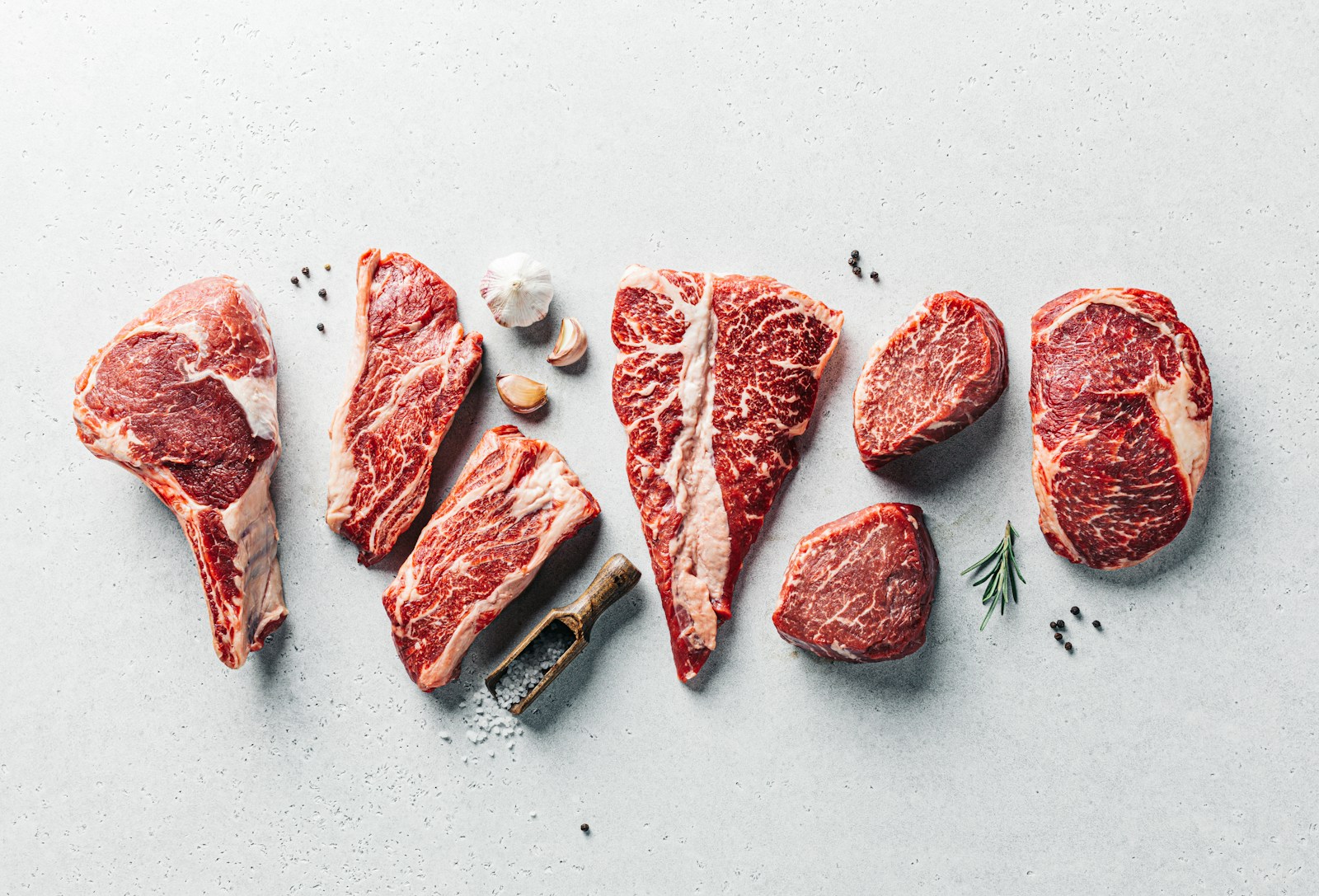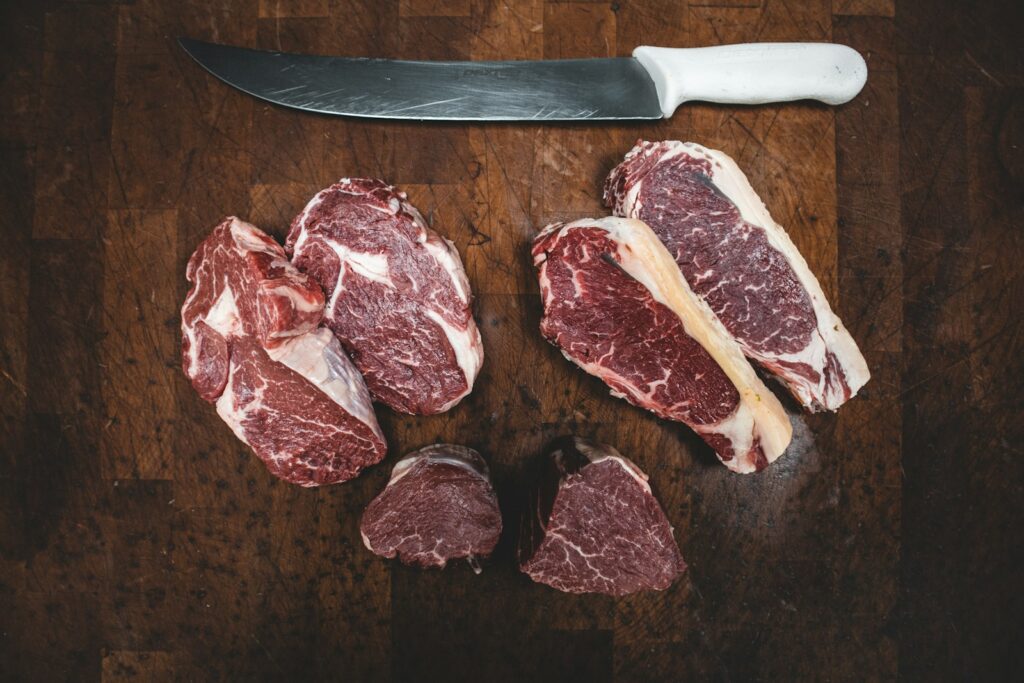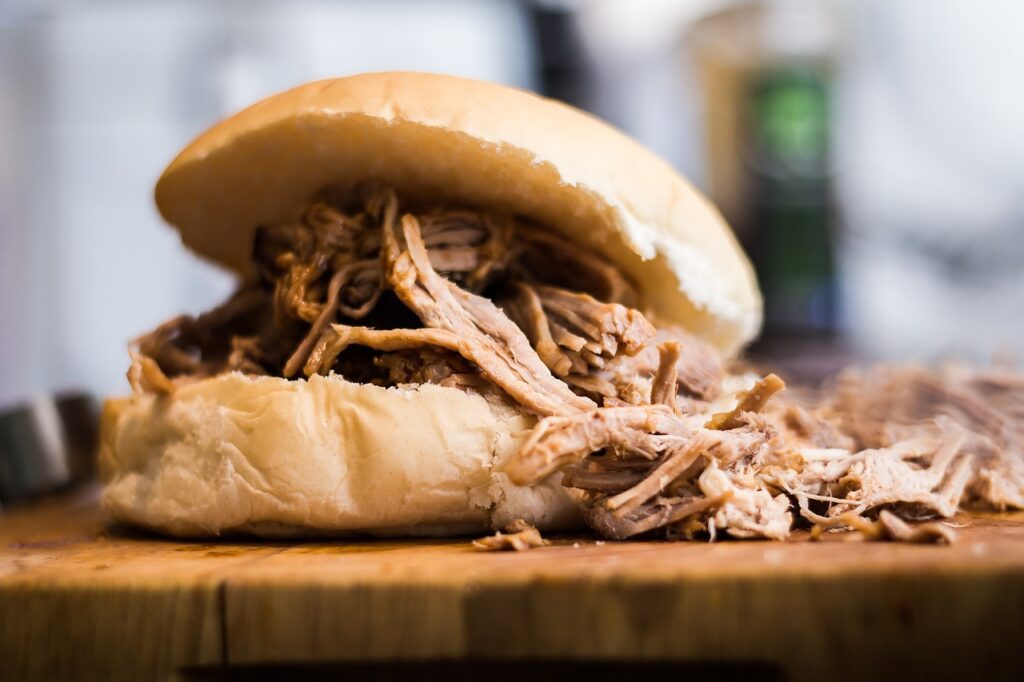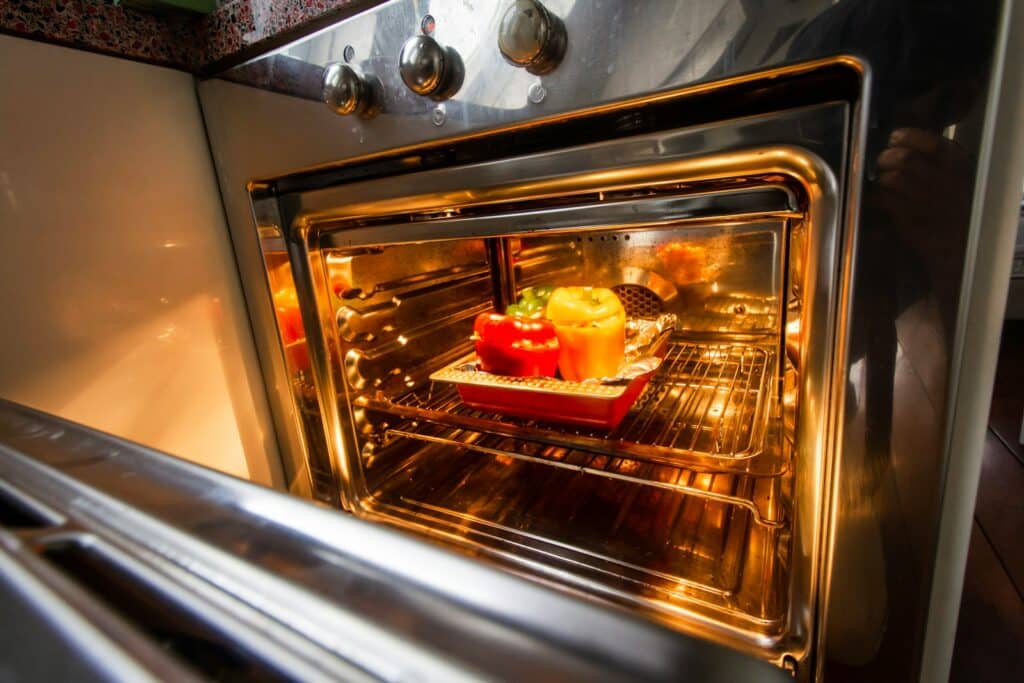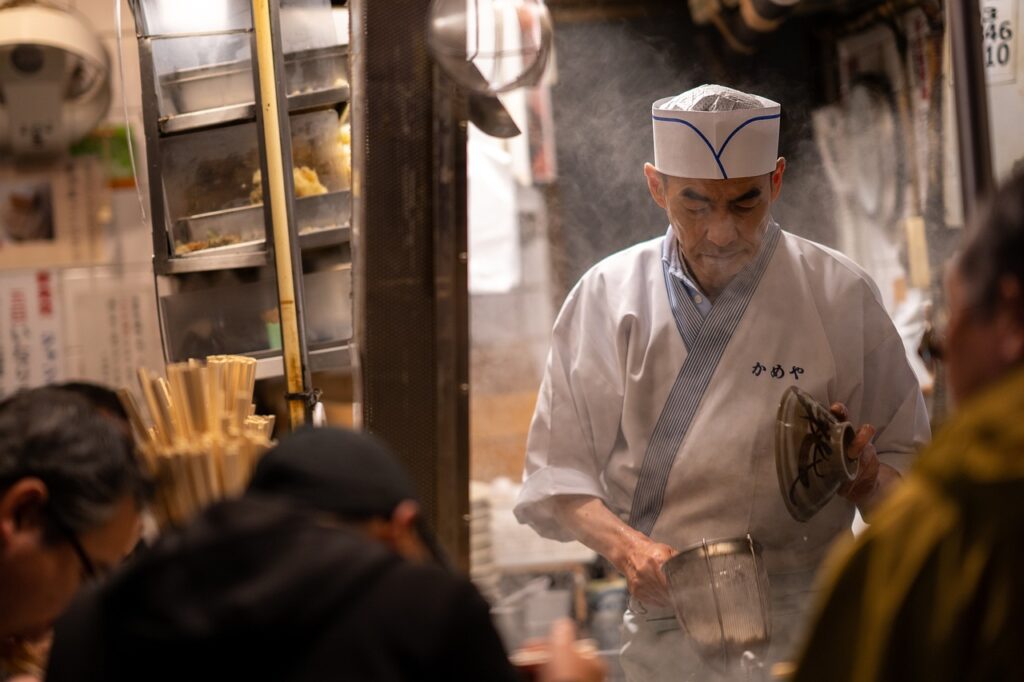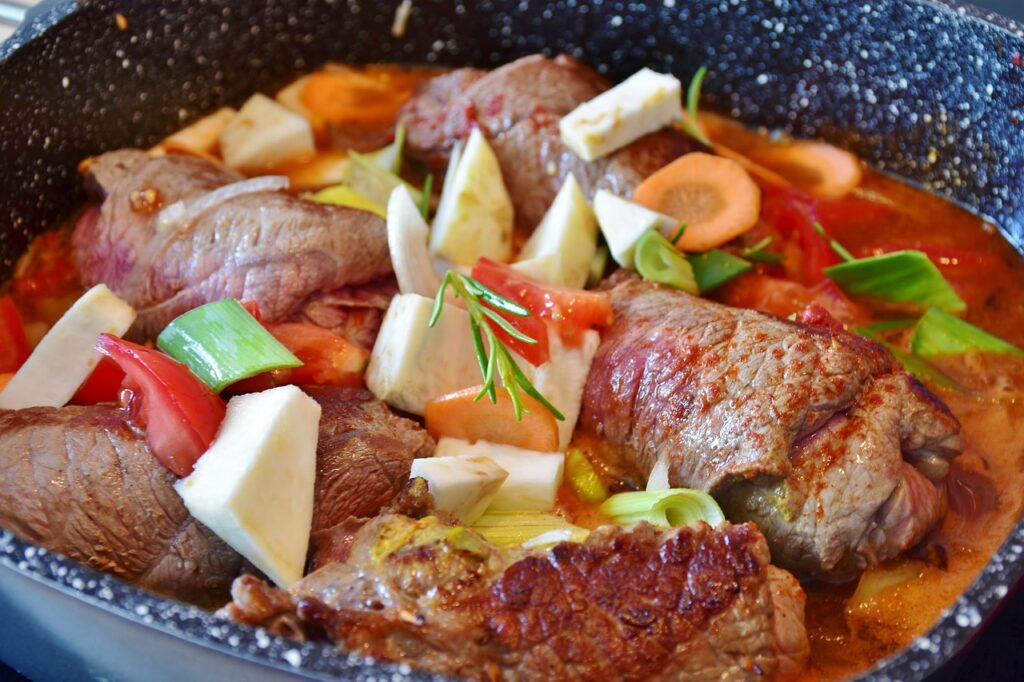Which Cooking Method is Best for a Chuck Roast?
Chuck roast, a beloved cut of beef, offers richness in flavor and tenderness when cooked properly. This cut comes from the shoulder area of the cow, making it ideal for long, slow cooking methods due to its dense connective tissue. In this article, we’ll explore various techniques to help you determine which cooking method is best suited for your chuck roast, ensuring a delicious, fall-apart tender meal. You can also explore our Ultimate Guide For Chuck Roast Recipes.
Introduction: So! Which Cooking Method is Best for a Chuck Roast?
Chuck roast, a beloved cut of beef from the shoulder area of the cow, is renowned for its rich flavor and versatility in cooking. This cut, often known as the shoulder roast, is characterized by its significant amount of connective tissue and marbling of fat, which contribute to its robust flavor and tender texture when cooked correctly.
The secret to mastering chuck roast lies in understanding how to transform its tough, muscular fibers into succulent, melt-in-your-mouth bites. Typically, chuck roast thrives under low and slow cooking conditions, where the heat gently breaks down the collagen within the tissues, turning them into gelatin over time. This process not only tenderizes the meat but also enriches it with deeper flavors and a silky texture that is highly sought after.
In this guide, we will explore various cooking methods that are ideal for chuck roast, including slow cooking, oven roasting, and braising. Each method has unique benefits and techniques, suited for different preferences and cooking styles. By the end of this exploration, you will be equipped with the knowledge to select and apply the best cooking method for your chuck roast, ensuring a delicious and memorable meal. Whether you are preparing a family dinner, a special occasion meal, or simply looking to refine your culinary skills with this versatile cut, understanding how to cook chuck roast properly is an essential culinary skill.
Discover the factors that make chuck roast tender in our article, Does Chuck Roast Get More Tender The Longer You Cook It?
Slow Cooking: A Favorite for Chuck Roast
Slow cooking is particularly well-suited for chuck roast, a cut that thrives on long, gentle cooking processes. This method is beloved for transforming tough cuts of meat into tender, flavorful dishes with minimal effort. Here’s why slow cooking stands out as the go-to method for many home cooks when preparing chuck roast:
Benefits of Slow Cooking Chuck Roast
- Tenderness: The slow and low approach of slow cooking allows the collagen and tough fibers in the chuck roast to break down gradually. This results in a fork-tender texture that’s often hard to achieve with faster cooking methods.
- Flavor Infusion: As the chuck roast cooks slowly, it absorbs the flavors of any added herbs, spices, and liquids, enhancing the overall taste of the meat.
- Convenience: Slow cookers provide a hands-off cooking experience. Once all the ingredients are added to the cooker, you can set it and forget it until the meal is ready, making it perfect for busy schedules.
For more tips on slow cooking and other cooking methods, check out What Can I Use A Chuck Roast For? Unlocking The Versatility.
How to Slow Cook Chuck Roast: Step-by-Step Guide
- Preparation:
- Season the chuck roast generously with salt, pepper, and other spices of your choice.
- For added flavor, sear the outside of the roast in a hot pan until it’s browned all over. This step is optional but recommended.
- Layering Ingredients:
- Place the seared chuck roast in the slow cooker.
- Add a mix of aromatic vegetables like onions, carrots, and celery around and on top of the meat.
- Pour in a flavorful liquid such as beef broth, red wine, or a combination of both. Ensure the liquid comes up at least halfway to the roast but not covering it entirely.
- Cooking:
- Cover and set the slow cooker to low. Cook the chuck roast for approximately 8 to 10 hours. The longer it cooks, the more tender it becomes.
- Finishing Touches:
- Once the roast is tender and easily pulls apart with a fork, it’s ready to be served.
- Consider thickening the cooking liquids to create a rich, flavorful gravy.
Tips for Enhancing Flavor and Texture in Slow Cooking
- Searing: Although it’s an extra step, searing the roast before slow cooking caramelizes the surface of the meat, adding a depth of flavor that permeates the roast during the slow cooking process.
- Layering Flavors: Introduce a bouquet garni or a selection of herbs and spices to complement the meat’s natural flavors. Ingredients like garlic, bay leaves, and thyme work well.
- Quality of Ingredients: Use high-quality broth or stock as the cooking liquid to ensure the roast is not only tender but also richly flavored.
Slow cooking is an excellent choice for anyone looking to make the most out of a chuck roast, offering a hassle-free way to achieve a delicious, comforting meal that’s both satisfying and rich in flavor. Whether you’re hosting a dinner or looking for a comforting weekday meal, slow-cooked chuck roast delivers on all fronts.
Which Cooking Method is Best for a Chuck Roast? Is It Roasting in the Oven?
Oven roasting is a straightforward and effective method to cook a chuck roast, delivering a dish that’s beautifully browned on the outside and tender on the inside. This technique is particularly well-suited for those who appreciate a roast with a crispy exterior and a juicy interior. Here’s how to perfectly roast a chuck roast in your oven:
1. Preparing the Chuck Roast
- Seasoning: Start by patting your chuck roast dry with paper towels to ensure proper searing. Generously season all sides of the roast with salt, pepper, and any other herbs or spices you prefer, such as garlic powder, onion powder, or a blend of dried herbs.
- Searing: Although optional, searing the chuck roast in a hot skillet on the stove can enhance the flavor by creating a caramelized crust. Heat some oil in a heavy pan, and sear the roast until all sides are golden brown.
2. Setting Up for Roasting
- Preheat Your Oven: Preheat your oven to a low temperature, around 300°F (150°C), to ensure slow, even cooking that tenderizes the meat.
- Prepare the Roasting Pan: Place the seared chuck roast in a roasting pan. Add roughly chopped vegetables like onions, carrots, and potatoes around the roast, if desired. These will cook in the meat’s juices, adding flavor and serving as a built-in side dish.
- Add Liquids: Pour a small amount of beef broth or water into the bottom of the pan. This will help keep the roast moist during the cooking process and provide a base for a gravy or sauce.
3. Cooking the Roast
- Roast: Cover the roast with aluminum foil or a lid to keep the moisture in. Place in the preheated oven and cook for about 3 to 4 hours, or until the meat is tender. The low and slow approach allows the connective tissue to break down without drying out the meat.
- Basting: Optionally, baste the roast every hour with its juices or a bit of beef broth to enhance the flavor and prevent the surface from drying out.
4. Finishing and Serving
- Check for Doneness: The roast should be fork-tender when finished. An instant-read thermometer should read around 190°F (88°C) when inserted into the thickest part of the roast, indicating that the collagen has broken down adequately.
- Resting the Meat: Remove the roast from the oven and let it rest for at least 20 minutes before slicing. This allows the juices to redistribute throughout the meat, ensuring it remains moist and tender.
- Making Gravy: While the roast rests, strain the cooking liquids from the pan and skim off any excess fat. Simmer the strained liquids in a saucepan, and thicken with a slurry of cornstarch and water if desired, to make a delicious gravy.
5. Additional Tips
- Temperature Consistency: Avoid opening the oven door frequently, as this can cause fluctuations in temperature that may affect the cooking time and quality of the roast.
- Vegetable Considerations: If adding vegetables, consider their cooking time. Some may need to be added later in the cooking process to avoid overcooking.
Oven roasting a chuck roast with these steps will result in a meal that’s not only flavorful and tender but also impressively presented. Whether for a special occasion or a regular family dinner, oven-roasted chuck roast is a classic dish that’s always satisfying.
Common Mistakes to Avoid to Better Understand Which Cooking Method is Best for a Chuck Roast?
Oven roasting can yield deliciously tender and flavorful results, especially with cuts like chuck roast. However, there are several common pitfalls that can turn a potentially perfect roast into a disappointing meal. Here are some key mistakes to avoid when oven roasting a chuck roast:
1. Not Preheating the Oven
- Why It Matters: Oven roasting requires a consistent, controlled heat to cook evenly. Starting with a cold or lukewarm oven can lead to undercooking or unevenly cooked meat.
- Best Practice: Always preheat your oven to the desired temperature before placing your roast inside. This ensures the meat starts cooking at the right temperature from the moment it enters the oven.
2. Skipping the Searing Process
- The Misconception: Some might skip searing the meat either due to time constraints or the mess it can create. However, searing is essential for flavor.
- Why Sear?: Searing the chuck roast before roasting creates a caramelized crust that enhances the flavor and helps lock in the juices, contributing to a moister, more flavorful roast.
3. Insufficient Seasoning
- Common Oversight: Underseasoning is a frequent error that can result in a bland roast.
- Tip for Success: Be generous with salt and pepper. Seasonings and herbs should be applied liberally to ensure the flavors penetrate the thick cut of meat, enhancing the overall taste.
4. Overcrowding the Pan
- The Issue: Overcrowding the roasting pan with too many vegetables or placing the roast too close to other items can hinder air circulation, leading to steaming instead of roasting.
- Solution: Use a large enough roasting pan to allow some space around the roast and any accompanying vegetables. This helps ensure that heat circulates evenly, allowing the roast to brown properly.
5. Cooking by Time Alone, Ignoring Temperature
- Why It’s a Problem: Relying solely on cooking time without checking the internal temperature of the roast can lead to undercooking or overcooking.
- How to Monitor: Use a meat thermometer to check the internal temperature of the roast. For chuck roast, you want to reach an internal temperature of around 190°F (88°C) for optimal tenderness and flavor.
6. Not Allowing the Meat to Rest
- The Temptation: It’s tempting to cut into the roast immediately after cooking, but this can lead to loss of juices.
- Resting Time: Allow the roast to rest for at least 20 minutes after removing it from the oven. This allows the juices to redistribute throughout the meat, making it juicier and more flavorful when sliced.
7. Not Making Use of Pan Juices
- Overlooked Opportunity: The juices left in the pan after roasting are packed with flavor and are excellent for making a sauce or gravy.
- Recommendation: Deglaze the pan with a little wine or broth, scrape up any browned bits, and simmer to reduce into a rich, flavorful gravy.
By avoiding these common mistakes, you can enhance the quality and enjoyment of your oven-roasted chuck roast, turning an everyday meal into a special culinary experience.
Which Cooking Method is Best for a Chuck Roast?: Is It Braising: A Moist Heat Technique?
Braising is a cooking method that combines both dry and moist heat, making it particularly effective for transforming tougher cuts of meat like chuck roast into tender, flavorful dishes. This technique involves initially searing the meat at a high temperature and then slowly cooking it in a covered pot with a moderate amount of liquid. Here’s a detailed look at why braising is an ideal method for chuck roast and how it works:
1. Benefits of Braising
- Tenderness: Braising slowly breaks down the connective tissues in tough cuts, rendering them tender and easy to eat.
- Flavor Concentration: As the meat cooks slowly in a covered pot, flavors from the liquid, meat, and any added seasonings meld together to create a rich, deep flavor profile that is absorbed back into the meat.
- Moisture Retention: The covered pot keeps moisture enclosed with the meat, ensuring it stays juicy and succulent throughout the cooking process.
2. How Braising Works
Braising is particularly suitable for chuck roast due to its rich marbling and connective tissue. Here’s how to braise a chuck roast step-by-step:
Preparing the Meat
- Seasoning: Season the chuck roast generously with salt, pepper, and other desired spices.
- Searing: Heat a small amount of oil in a heavy, oven-safe pot or Dutch oven. Once hot, add the roast and sear it on all sides until browned. This step adds flavor and texture by caramelizing the surface of the meat.
Adding Liquids and Aromatics
- Deglaze: After removing the roast, add a little broth or wine to the pot to deglaze it, scraping up any browned bits from the bottom. These bits add rich flavor to the braising liquid.
- Aromatics: Add onions, garlic, and other vegetables or herbs to the pot and sauté until they start to soften. This builds a flavor base for the braise.
- Liquids: Return the roast to the pot and add enough liquid (such as beef broth, wine, or a combination) to come up about halfway up the sides of the roast. The choice of liquid can greatly influence the dish’s flavor, so choose one that complements the other ingredients.
Slow Cooking
- Cover and Cook: Cover the pot with a tight-fitting lid and transfer it to an oven preheated to a low temperature, typically around 300°F (150°C). Alternatively, you can continue to cook it on the stovetop over low heat. Cook for several hours, until the meat is fork-tender.
- Basting: Occasionally, baste the roast with the cooking liquid to enhance its flavor and prevent it from drying out.
3. Finishing the Dish
- Resting the Meat: Once the roast is tender, remove it from the pot and let it rest while you finish the sauce.
- Sauce Preparation: Strain the cooking liquids and vegetables, then skim off any excess fat. Reduce the strained liquid to thicken it into a rich sauce. Adjust seasoning as needed.
- Serving: Slice or shred the roast and serve it with the sauce poured over or alongside for dipping.
Braising chuck roast not only maximizes the cut’s flavor and tenderness but also provides a comforting, hearty dish that’s perfect for colder months or any occasion that calls for a satisfying meal.
Comparing Cooking Methods for Chuck Roast
Chuck roast, known for its rich flavor and tough texture, can be cooked using various methods, each offering unique benefits and results. Here’s a detailed comparison of the three popular cooking methods: slow cooking, oven roasting, and braising, helping you decide which technique best suits your needs.
1. Slow Cooking
- Benefits:
- Convenience: Ideal for “set it and forget it” cooking, allowing busy cooks to prepare other tasks while the meal cooks.
- Moisture Retention: The closed environment of a slow cooker ensures that moisture is retained, making the meat tender and flavorful.
- Flavor Development: Extended cooking times allow for deep flavor infusion from herbs, spices, and cooking liquids.
- Drawbacks:
- Texture: While the meat becomes very tender, it can sometimes become too soft or mushy if overcooked.
- Limited Crust Formation: Slow cooking does not produce a crispy outer crust, which some may miss for textural contrast.
2. Oven Roasting
- Benefits:
- Crisp Exterior: Roasting at higher temperatures can create a satisfying crust around the chuck roast.
- Control: Oven temperatures are consistent, offering controlled cooking that can be more predictable than other methods.
- Versatility: Allows for cooking vegetables alongside the meat in the same pan, infusing them with the roast’s flavors.
- Drawbacks:
- Monitoring Required: Unlike slow cooking, oven roasting requires more attention to prevent overcooking.
- Moisture Control: Without proper basting or covering, the roast can dry out if not monitored carefully.
3. Braising
- Benefits:
- Flavor Concentration: The combination of searing and slow cooking in liquid packs the meat with intense flavors and makes it extremely tender.
- Balanced Texture: Braising provides a tender interior with a more textured exterior from the initial sear.
- Sauce Creation: The cooking liquid can be reduced into a rich, flavorful sauce that complements the meat perfectly.
- Drawbacks:
- Time-Consuming: Requires initial preparation such as searing and assembling ingredients, followed by hours of cooking.
- Equipment: Needs a suitable pot or Dutch oven, which can be an investment if not already available.
Conclusion: Choosing the Best Method
- For Convenience: Slow cooking is unbeatable for its ease and minimal active cooking time.
- For Texture and Flavor: Braising offers a great balance between a tender interior and a flavorful crust.
- For Simplicity and Crispiness: Oven roasting is ideal if you prefer a simpler method and enjoy a crispy exterior.
Each method has its merits, and the best choice depends on your specific needs, available time, and desired outcome. Whether you prefer the hands-off approach of slow cooking, the crispiness of an oven roast, or the deep flavors of braising, each technique can turn a humble chuck roast into a delightful meal.
FAQs: Best Cooking Methods for Chuck Roast
What is the best cooking method for chuck meat?
The best cooking method for chuck roast depends on your taste preferences and the texture you’re aiming for. Slow cooking and braising are excellent for achieving maximum tenderness and flavor infusion, as they allow the tough fibers and connective tissues in the meat to break down thoroughly. Oven roasting is ideal if you prefer a crusty exterior with a tender inside.
Is chuck roast better in a crockpot or oven?
- Crockpot: A crockpot (or slow cooker) is superb for cooking chuck roast if you value convenience and tenderness. The long, low-temperature cooking process helps the meat become exceptionally tender and allows flavors to develop deeply.
- Oven: If you prefer a roasted flavor with a crispy exterior, cooking chuck roast in the oven might be better. The oven provides a drier heat that can create a flavorful crust on the outside of the meat.
Should I sear a chuck roast before cooking?
Yes, searing a chuck roast before cooking is highly recommended, regardless of the cooking method you choose. Searing the meat in a hot pan helps to develop a complex flavor profile and a beautiful color through the Maillard reaction. It also helps to lock in the juices, ensuring the roast remains moist and flavorful during the cooking process.
Does chuck roast get more tender the longer it cooks?
Yes, generally, a chuck roast becomes more tender the longer it cooks, especially when cooked at a low temperature. The extended cooking time allows the connective tissue and collagen in the meat to break down fully, resulting in a more tender texture. However, it’s essential to maintain sufficient moisture during the cooking process to prevent the meat from drying out. In methods like slow cooking and braising, where the meat is submerged or partially submerged in liquid, the roast can cook for extended periods without becoming dry.

